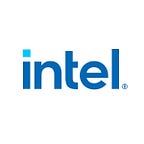How to Strengthen Your App Development in the Cloud
Introduction
In this blog, we are going to look at what developers working on migrating applications into the cloud need to consider and see how Intel architecture and platforms can have a positive impact on migrations.
A platform designed for scale
We believe in open standards and scalability. Modern apps need seamless portability across clouds and platforms. For many organizations, flexibility is the main advantage of the cloud: easily scale workloads up and down and only pay for the resources needed.
You may have heard that it’s no big deal to port your code from one architecture to another. However, porting takes time and money. It’s a complicated, intense process. As new features and functionality are launched from Intel, apps built on ARM may have limitations and long-term costs, and the hassle of managing multiple codebases.
There are more than 50,000 Intel-based instance types offered by the top cloud service providers, making it easy to build once and deploy almost anywhere1. And because a variety of enterprise apps were built to run on Intel platforms, you can deploy and migrate your workloads with greater confidence.
As you consider options for development, consider the long term …
- Multicloud improves business stability — build in flexibility by using common code that runs easily across many vendors. Intel-based instances can help ensure compatibility and supportability across multiple cloud solutions to help reduce business risk and keep your options open.
- Say NO to single-cloud porting — ARM doesn’t run every software program or library out there, so when you’re ready to add new functionality from Intel, you’ll risk the long-term cost of managing multiple codebases.
- Security matters — Security is critical, yet some ARM-based cloud solutions don’t provide end-to-end application security. With Intel, it’s a fundamental part of the hardware. Intel® SGX is the most researched, updated, and battle-tested trusted execution environment (TEE) for data center confidential computing, with the smallest attack surface within the system2. Intel® SGX confidential computing technology delivered in Intel 3rd Gen Xeon processors enables application isolation in private memory regions, called enclaves, to help protect code and data while in use.
Intel supports a vast ecosystem of commercial software providers, many with decades-long co-engineering relationships to ensure their software runs best on Intel platforms — be they on-prem or in the cloud. Examples include SAP, VMware, Microsoft, Oracle, and many more.
For your existing and new enterprise apps and tools, maintaining an Intel-based environment can help reduce complexity and help increase efficiency when it comes to load balancing, security patches, and validation.
Additional applications that have an affinity to Intel are apps that can be vectorized such as High-Performance Computing (HPC), Electronic Design Automation (EDA), and Data.
Intel DevCloud
With Intel DevCloud, developers can test their software examples and models from anywhere in the world, as well as testing before moving into production. Access the latest Intel CPUs, GPUs, FPGAs, and software, so you can be confident you are developing with the best Intel has to offer.
Go to DevCloud to learn more and sign up.
Summary
Intel architecture delivers the broadest availability and compatibility across multi-clouds. In addition, Intel Xeon processors are supported by the broadest software ecosystem. Intel Xeon is an open architecture that does not lock customers in. Finally, the most popular enterprise applications are highly optimized for x86 — thanks to the co-engineering relationships that have been in place for years.
Customers choose Intel Architecture for their proven performance with the most robust software ecosystem and broadest global availability. Each ARM-based SOC is customized by its vendor.
Intel can deliver consistent and predictable application performance as customers scale from on-prem to the edge and cloud. Xeon’s massive global ecosystem delivers more flexibility, deployment options, and proven solution choices than ARM System-on-a-Chip (SoC) or AMD. Users can weigh instance savings against Total Cost of Ownership (TCO), conversion cost, and lock-in risk.
Notices & Disclaimers
¹ Liftr Cloud Components Tracker, April 2021 — https://liftrinsights.com/cloud-components-tracker
² intel.com/trustsgx — https://www.intel.com/content/www/us/en/architecture-and-technology/software-guard-extensions-enhanced-data-protection.html
Performance varies by use, configuration, and other factors. Learn more at www.intel.com/performanceindex
Performance results are based on testing by Intel as of March 2021 and may not reflect all publicly available updates.
See configuration disclosures for details.
No product or component can be absolutely secure.
Your costs and results may vary.
Intel® technologies may require enabled hardware, software, or service activation.
Intel does not control or audit third-party data. You should consult other sources to evaluate accuracy.
© Intel Corporation. Intel, the Intel logo, and other Intel marks are trademarks of Intel Corporation or its subsidiaries. Other names and brands may be claimed as the property of others.
